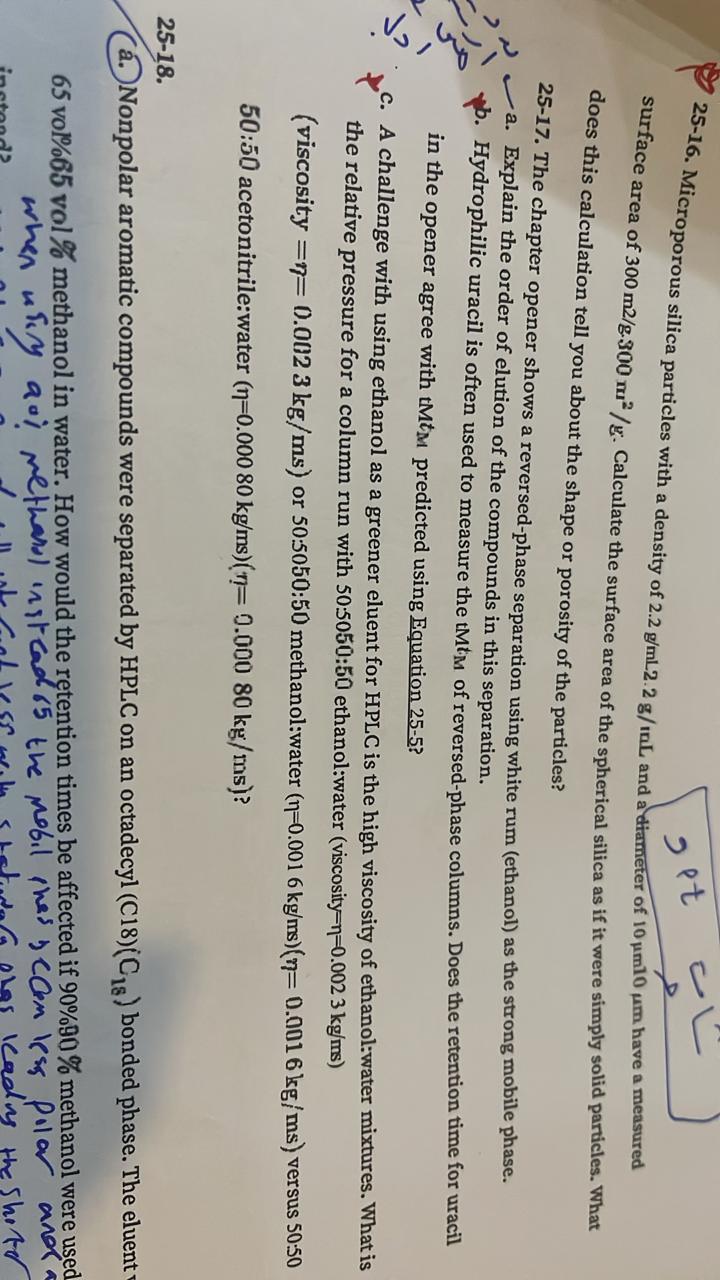Home /
Expert Answers /
Chemistry /
25-16-microporous-silica-particles-with-a-density-of-2-2-g-m-l2-2-g-m-l-and-a-diameter-of-10-mu-pa782
(Solved): 25-16. Microporous silica particles with a density of 2.2(g)/(m)L2.2(g)/(m)L and a diameter of 10\mu ...
25-16. Microporous silica particles with a density of 2.2(g)/(m)L2.2(g)/(m)L and a diameter of 10\mu m10\mu m have a measured
surface area of 300m(2)/(g).300m(m^(2))/(g). Calculate the surface area of the spherical silica as if it were simply solid particles. What
does this calculation tell you about the shape or porosity of the particles?
25-17. The chapter opener shows a reversed-phase separation using white rum (ethanol) as the strong mobile phase.
a. Explain the order of elution of the compounds in this separation.
b. Hydrophilic uracil is often used to measure the tMt_(M) of reversed-phase columns. Does the retention time for uracil
in the opener agree with tMt_(M) predicted using Equation 25-5?
c. A challenge with using ethanol as a greener eluent for HPLC is the high viscosity of ethanol:water mixtures. What is
the relative pressure for a column run with 50:5050:50=\eta =0.0023k(g)/(m)s =\eta =0.0023k(g)/(m)s 50:5050:50 methanol:water (\eta =0.0016k(g)/(m)s)(\eta =0.0016k(g)/(m)s) versus 50:50
50:50 acetonitrile:water (\eta =0.00080k(g)/(m)s)(\eta =0.00080k(g)/(m)s)(C18)(C_(18)) bonded phase. The eluent
65vol%65vol% methanol in water. How would the retention times be affected if 90%90% methanol were used